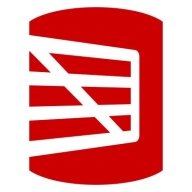

Nagios Core and Redgate Monitor are competing products in IT infrastructure monitoring and database performance management. Redgate Monitor seems to have the upper hand in database monitoring due to its specialized features, while Nagios Core is favored for its cost-effectiveness and flexibility in broader IT environments.
Features: Nagios Core offers robust monitoring and notification capabilities for IT networks and servers, making it ideal for diverse environments. Its flexibility supports integration across various systems. Redgate Monitor provides advanced SQL Server monitoring with detailed performance diagnostics and comprehensive alerting features, which make it particularly valuable for specialized database management.
Ease of Deployment and Customer Service: Nagios Core requires more complex configurations and relies on community-driven support, which might result in a steeper learning curve. Redgate Monitor provides a more straightforward setup with professional support, ensuring quicker deployment and easier troubleshooting processes.
Pricing and ROI: Nagios Core, being open-source, incurs minimal upfront costs, offering substantial ROI for those with technical expertise and resource availability. Redgate Monitor has higher initial expenses aligned with its comprehensive support and specialized database monitoring benefits, which might justify the cost for those seeking targeted solutions.

This is IT infrastructure monitoring's industry-standard, open-source core. Free without professional support services.
Redgate Monitor offers a comprehensive tool for SQL Server database management, focusing on real-time performance monitoring and diagnostics. It's designed for database administrators seeking to optimize system efficiency through detailed insights.
Redgate Monitor helps detect and address performance issues swiftly, ensuring databases run smoothly. Known for its intuitive interface, it provides customizable alerting and insightful analytics. It supports multi-server environments, making it suitable for large-scale database management. Users appreciate its depth in presenting historical data, often highlighting areas needing improvement in database performance and recommending solutions.
What are the most important features of Redgate Monitor?Industries like finance, technology, and healthcare use Redgate Monitor for its robust performance monitoring, ensuring critical data systems operate efficiently. This tool is implemented to support high-stakes environments where database performance directly impacts service delivery and operational success.
We monitor all IT Infrastructure Monitoring reviews to prevent fraudulent reviews and keep review quality high. We do not post reviews by company employees or direct competitors. We validate each review for authenticity via cross-reference with LinkedIn, and personal follow-up with the reviewer when necessary.